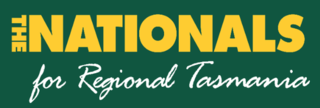Related Research Articles

Henry Dobson was an Australian politician, who served as a member of the Tasmanian House of Assembly and later of the Australian Senate. He was the 17th Premier of Tasmania from 17 August 1892 to 14 April 1894.
The 1909 Tasmanian state election was held on Friday, 30 April 1909 in the Australian state of Tasmania to elect 30 members of the Tasmanian House of Assembly. This was the first general election in the British Empire to elect all members through a form of proportional representation, the single transferable vote.

The 1937 Tasmanian state election was held on 20 February 1937 in the Australian state of Tasmania to elect 30 members of the Tasmanian House of Assembly. The election used the Hare-Clark proportional representation system — six members were elected from each of five electorates.
This is a list of members of the Tasmanian House of Assembly between the 1891 election and the 1893 election.
This is a list of members of the Tasmanian House of Assembly between the 1893 election and the 1897 election.
This is a list of members of the Tasmanian House of Assembly between the 1886 election and the 1891 election.
This is a list of members of the Tasmanian House of Assembly between the 1897 election and the 1900 election.
The Electoral district of Monmouth was a single-member electoral district of the Tasmanian House of Assembly. It was based in the rural hinterland to the north of the state capital, Hobart.
The Electoral district of Westbury was a single-member electoral district of the Tasmanian House of Assembly. It centred on the town of Westbury near Tasmania's second city of Launceston.
The electoral district of Cumberland was a single-member electoral district of the Tasmanian House of Assembly. It was based in central Tasmania in towns such as Bothwell, Hamilton and Ouse, and until 1894 included much of the West Coast before the mining districts of Zeehan and Queenstown became large enough to require their own seats.
The Electoral district of Lyell was a single-member electoral district of the Tasmanian House of Assembly. It included the towns of Queenstown and Strahan in the West Coast region of Tasmania.
The Electoral district of Latrobe was a single-member electoral district of the Tasmanian House of Assembly. It was based at Latrobe on Tasmania's north coast near the town of Devonport.
The electoral district of Devonport was a single-member electoral district of the Tasmanian House of Assembly. It was based at the town of Devonport on Tasmania's north coast.
The Electoral district of Richmond was a single-member electoral district of the Tasmanian House of Assembly. Its capital was the town of Richmond to the north of Hobart.
The Electoral district of Sorell was a single-member electoral district of the Tasmanian House of Assembly. Its population centre was the town of Sorell east of Tasmania's capital, Hobart, and included the Tasman Peninsula.
The electoral district of Queensborough was an electoral district of the Tasmanian House of Assembly. It was based in the southern suburbs of Tasmania's capital city, Hobart, in particular Sandy Bay, and surrounding districts such as Cascades, Taroona and Kingston.
This is a list of members of the Tasmanian Legislative Council between 1891 and 1897. Terms of the Legislative Council did not coincide with Legislative Assembly elections, and members served six year terms, with a number of members facing election each year.

The Tasmanian Nationals are a political party in the Australian state of Tasmania, aligned with the National Party of Australia. The party is not currently registered with the Tasmanian Electoral Commission, and is not separately registered with the Australian Electoral Commission, unlike the other state branches of the Nationals.
Thomas Dillon was an Australian politician.
Henry Boyes Mugliston was an Australian politician.
References
- Newman, Terry (1994). Representation of the Tasmanian People. Tasmanian Parliamentary Library. ISBN 0-7246-4147-5.
- Hughes, Colin A.; Graham, B. D. (1976). Voting for the South Australian, Western Australian and Tasmanian Lower Houses, 1890-1964. Canberra: Australian National University. ISBN 0-7081-1334-6.
- Parliament of Tasmania (2006). The Parliament of Tasmania from 1956 Archived 8 December 2008 at the Wayback Machine